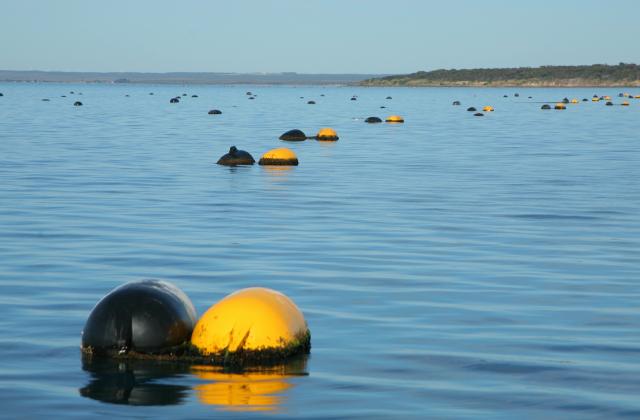
A new aquaculture zone policy for Lower Eyre Peninsula has been finalised after three years following a review by Primary Regions and Industries South Australia (PIRSA).
An advisory committee originally formed with an independent chair, consisting of representatives from across the government and the aquaculture industry, was established to provide advice and inform the review.
The main changes in the Aquaculture (Zones – Lower Eyre Peninsula) Policy 2023 include permitting sustainable growth in both the existing established aquaculture sectors and the emerging sectors, such as algae or seaweed based on the latest scientific data, information and modelling; increasing opportunities for integrated multi-trophic aquaculture whereby one aquaculture sector assists to offset nutrient outputs of the other; permitting of aquaculture-related tourism businesses in addition to research and education; improved biosecurity provisions; and a new aquaculture exclusion zone around Dangerous Reef and additional management arrangements to protect Australian Sea-lion populations.
PIRSA’s executive director of fisheries and aquaculture Gavin Begg said the new policy reflected the latest science and feedback received through consultation.
“South Australia is a world leader in the ecologically sustainable development of aquaculture, with one of Australia’s most comprehensive legislative frameworks in place to protect and manage the state’s aquatic resources whilst encouraging investment, growth and benefit to the community,” he said.
“Aquaculture is the fastest growing primary industry in Australia and aims to meet the ever-increasing global demand for seafood.”
Port Lincoln mussel industry representative Andy Dyer said the sector asked for boundary realignments so certain sites could be moved.
“For other sectors like kingfish they were after increases in biomass allowance to allow for industry expansion, and for the tuna industry they needed an increase in water area and biomass to accommodate industry growth,” he said.
“There was data provided by the Australian Southern Bluefin Tuna Industry (ASBTI), SARDI (South Australian Research and Development Institute) and the like to ensure that the desired increases wouldn’t have a negative impact on the environment. Departments like the EPA (Environment Protection Agency) have gone through the carrying capacity drafts to ensure this is all sustainable and achievable.”
“We thank PIRSA for doing this zone policy review at the request of industry to help further expand the aquaculture sector in Eyre Peninsula.”
ASBTI advisor Brian Jeffriess said the data provided indicated industries like mussels, yellowtail kingfish and specifically tuna were expanding rapidly and generating more than 1100 full-time jobs in Spencer Gulf.
“Prior to this plan being finalised [last] week, the industries were all struggling to find the space to expand, so now the space has been provided which is a tremendous step forward,” he said.
“The tuna quota for how much can be caught live has been increased by 17 per cent starting next year.
“These are environmentally sustainable and value-adding industries.”
Lower Eyre Peninsula is the most significant aquaculture zone in the state, with aquaculture production estimated at $238 million in 2021-22, with Southern bluefin tuna the state’s largest single aquaculture product with overseas exports of $110m.





